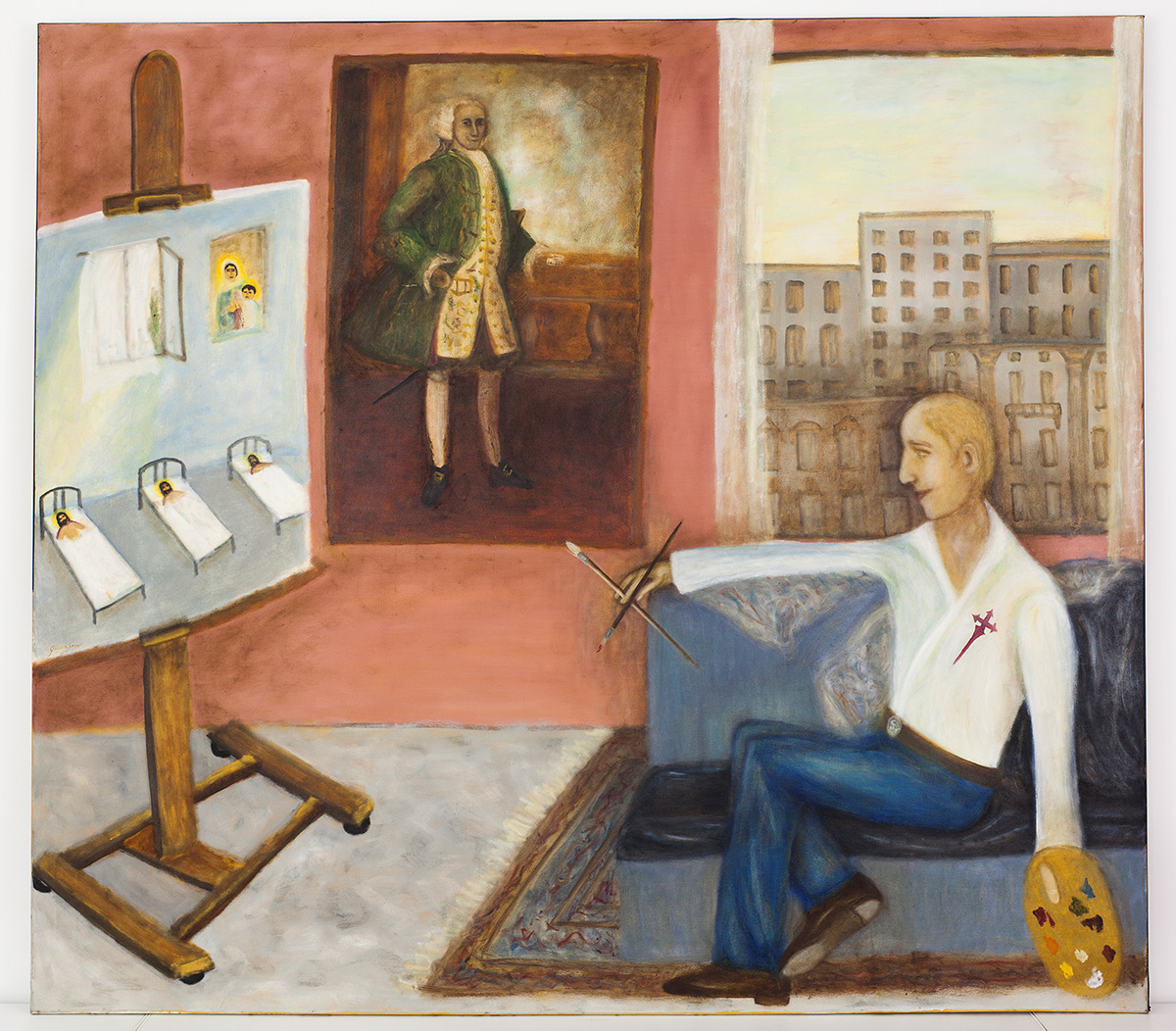Santiago García Sáenz (1955 – 2006) was born in Buenos Aires, where he would live until the time of his death. In the nineteen-seventies, he studied painting in the studios of artists David Heynemann and José Manuel Moraña. He enrolled briefy in architecture school. His frst shows were held at the celebrated Van Riel gallery (̀̈̆̅) and Lirolay gallery (̀̈̆̆). Later, he worked with the gallery run by Christel Kuker,1 with whom he shared studio space. It was through the decidedly fgurative work he showed at that gallery that he found a place for himself on the local art scene.
He worked for Ruth Benzacar in the eighties, during the period when her gallery would become a pivotal venue on the Buenos Aires art scene. The work he exhibited at that gallery on two occasions bore the infuence of Luis Felipe Noé’s informalist painting, but also of contemporary artists like Duilio Pierri and Marcia Schvartz. In the mid-eighties, he began developing a very personal style that set him apart from the studios where he had studied. He reconnected with the Catholic faith of his childhood and traveled around Argentina and greater Latin America. He produced a series of murals for public spaces: Mundus Criollo (̀̈̇̄) was commissioned by Subterráneos de Buenos Aires for the Peru subway station; a large mural for the Praia de Geriba, Buzios, Brazil (̀̈̇̅); Mural del Club Social y Deportivo Mechongué (̀̈̇̅); and the Via Crucis for Santa Cecilia church in Castelar, Argentina (̀̈̇̆).
Along with this spiritual reawakening came greater and greater interest in Native American cultures and Americanist traditions. In ̀̈̇̃, he began work on the series Te estoy buscando América [I Am Looking for You, America]—a project he would pursue through ̀̈̈́ and show a number of times at the Centro Cultural Recoleta. After traveling in northwestern Argentina and Bolivia, he and Liliana Maresca (̀̈̄̀–̀̈̈̃, Buenos Aires), a close personal friend, held a joint show at Galería Centoira (̀̈̈˿). He traveled to Paraguay often. He participated in a spiritual retreat in Tüpasy María, a Benedictine monastery. In ̀̈̈̀, the show Pinturas was held at the Museo del Barro in Asunción, Paraguay.
That same year, he took part in the event La Conquista. ̄˿˿ años. ̃˿ artistas, at the Centro Cultural Recoleta. Over the course of the nineties, his work was shown at venues such as the Museo de Arte Decorativo (̀̈̈́), the Museo de Arte Hispanoamericano Isaac Fernández Blanco (̀̈̈̄), the Museo de Bellas Artes de Salta (̀̈̈̄), and the Centro Cultural “Eugenio Flavio Virla” in Tucumán. His painting was exhibited abroad as well. In ̀̈̈́, he participated in the VIII Bienal de Arte Iberoamericano in Mexico; in ̀̈̈̅, he showed at the Casa Argentina in Rome, Italy, where he was introduced to Pope John Paul II, to whom he gave the painting “Nuestro Señor de la Paciencia” [Our Lord of Patience]. In ̀̈̈̆, his “El sueño de Jacob” [Jacob’s Dream] was awarded the Fundación Fortabat’s frst prize in the young painter’s category.


 García Saenz Santiago
García Saenz Santiago